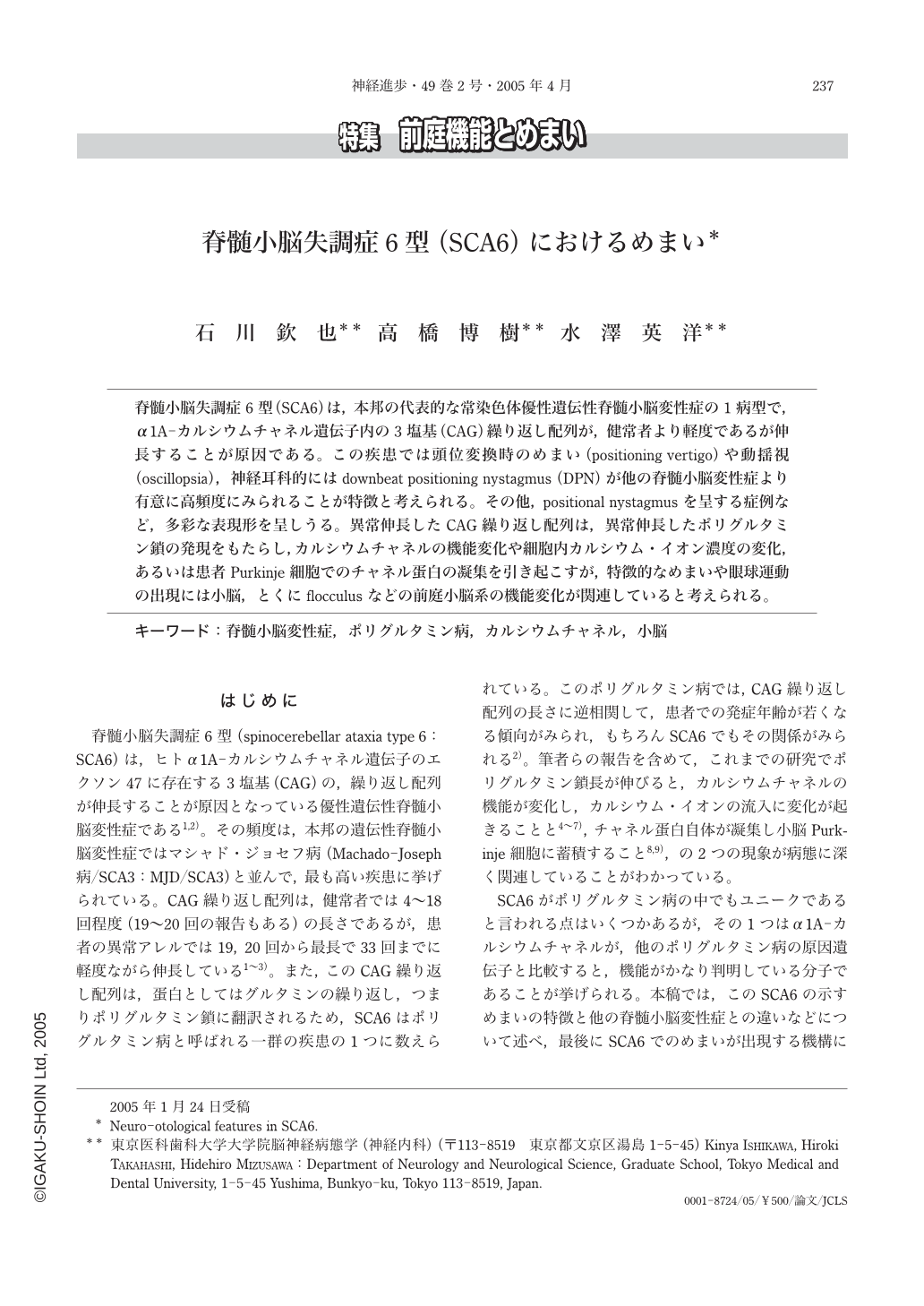Japanese
English
- 有料閲覧
- Abstract 文献概要
- 1ページ目 Look Inside
脊髄小脳失調症6型(SCA6)は,本邦の代表的な常染色体優性遺伝性脊髄小脳変性症の1病型で,α1A-カルシウムチャネル遺伝子内の3塩基(CAG)繰り返し配列が,健常者より軽度であるが伸長することが原因である。この疾患では頭位変換時のめまい(positioning vertigo)や動揺視(oscillopsia),神経耳科的にはdownbeat positioning nystagmus(DPN)が他の脊髄小脳変性症より有意に高頻度にみられることが特徴と考えられる。その他,positional nystagmusを呈する症例など,多彩な表現形を呈しうる。異常伸長したCAG繰り返し配列は,異常伸長したポリグルタミン鎖の発現をもたらし,カルシウムチャネルの機能変化や細胞内カルシウム・イオン濃度の変化,あるいは患者Purkinje細胞でのチャネル蛋白の凝集を引き起こすが,特徴的なめまいや眼球運動の出現には小脳,とくにflocculusなどの前庭小脳系の機能変化が関連していると考えられる。
Spinocerebellar ataxia type 6(SCA6)is an autosomal dominant degenerative disorder caused by a small expansion of CAG repeat that encode polyglutamine in the alpha1A-calcium channel gene. Compared to other spinocerebellar degenerations, this disease characteristically shows positioning vertigo and oscillopsia, and downbeat positioning nystagmus is seen on nystagmogram. These characteristic signs and symptoms are probably due to involvement of the vestibulo-cerebellum, such as the flocculus.

Copyright © 2005, Igaku-Shoin Ltd. All rights reserved.


